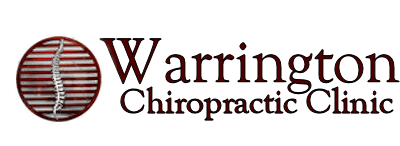STRUGGLING WITH BACK PAIN?

BACK PAIN IN PENSACOLA
The number of injuries, misalignment, and conditions that cause back pain are numerous. Parts of your back, such as tendons, ligaments, discs, muscles, and bones can become irritated or damaged resulting in pain. Sometimes severe trauma, such as a car accident, can result in back pain. Other times back pain may be caused by minor repetitive stress that leads to damage. Therefore, you may not be able to recall any particular event that caused the onset of your pain.
In addition, conditions such as obesity, arthritis, kidney stones, and urinary tract infections have been shown to give symptoms of lower back pain. With all of these possible causes of back pain, it is important to find a doctor that takes into account all aspects of health to reach an accurate diagnosis. Fortunately, Dr. Yenzer at Warrington Chiropractic in Pensacola has over 32 years of education and experience to determine the correct diagnosis. Without an accurate diagnosis and treatment, even the most minor conditions can develop into serious lifelong conditions.
Disc Bulges or Herniation
Treatment for back pain has come a long way. It was once believed that taking pain medication and getting some rest and relaxation was the best course of treatment for lower-back pain. Nowadays research supports first trying drug-free, conservative, effective and non invasive options for pain management while remaining as active as possible during recuperation. [3] [4]
One of the most common and painful causes of back pain is a disc bulge or herniation. However, it is important to recognize that not all disc bulges or herniation result in pain. If the damaged disc is irritating a surrounding nerve, shooting pain and weakness into the legs may develop. The discomfort is often described as stabbing and lightning-like. To understand how a disc herniation develops, it is best to think of the disc as a jelly donuts. If the outer edges of the donuts (disc) are damaged over time, most typically from wear and tear, the jelly in the middle of the disc can escape. This level of severity can be very difficult to reverse. Chiropractic care has been shown to prevent the advancement of the herniation, and provide relief from the associated pain.
Joint Dysfunction
Joint dysfunction is one a commonly overlooked contributors to back pain. Joint dysfunction is a medical term used to describe a vertebrae in our spine that not moving properly. When these joint dysfunctions occur, normal movement is disrupted, and a cascade of events (including pain) can occur. Joint dysfunctions can occur anywhere in the spine and there are numerous factors that can cause them including repetitive use, poor postural habits or even stress. The time frame to correct joint dysfunctions varies by the individual, but our team at Warrington Chiropractic is trained to find and correct this issue quickly.
Muscular Sprains and Tendon or Ligament Strains
Strains and sprains can occur in anyone, but they typically occur in people who engage in tasks that their body is not accustom to. Ligament sprains are typically caused by stretching the involved ligament past its limits creating tears. Muscular strains are commonly caused by lifting too heavy of an object, as well as twisting motions. Strains and sprains of the ligaments can be extremely painful, and are often accompanied by swelling and bruising of the surrounding area. Strains and sprains are intimately intertwined with the spine and therefore typically respond well to chiropractic care. Our clinic is fully equipped to provide comprehensive treatment of these injuries.
Chronic stress can change a person's physiological profile. When our bodies are under intense stress, various stress hormones are released to adapt to the situation. Some of the adaptive mechanisms include; an elevated heart rate, an increased blood pressure, an altered immune system, decreased bone density, and decreased muscle mass. If this response is prolonged, elevated stress levels have been shown to contribute to the development of heart disease, digestive issues, depression, obesity, and back pain. All of the tension produced by the stress hormones causes a contraction of muscle tissue that produces “trigger points”. These trigger points can be extremely painful, but thankfully they are treated with a high success rate at Warrington Chiropractic.
When health care professionals, such as chiropractors, treat the cause of back pain rather than the symptoms, the treatment of back pain becomes less complicated. Luckily, our outstanding team is specially trained in their treatment.
REFERENCES:
1. Rubin Dl. Epidemiology and Risk Factors for Spine Pain. Neurol Clin, 2007; May;25(2):353-71.
2. Hart LG, et al. Physician Office Visits for Low Back Pain: Frequency, Clinical Evaluation, and Treatment Patterns from a U.S. National Survey. Spine, 1995; 20:11–9.
3. GBD 2015 Disease and Injury Incidence and Prevalence Collaborators. Global, regional, and national incidence, prevalence, and years lived with disability for 310 diseases and injuries, 1990–2015: a systematic analysis for the Global Burden of Disease Study 2015. The Lancet. 2016 Oct 7; 388:1545–1602.Qaseem A, et al. Noninvasive Treatments for Acute, Subacute, and Chronic Low Back Pain: A Clinical Practice Guideline from the American College of Physicians. Ann Intern Med, 2017;166(7):514-530.
4. Machado GC, et al. Non-steroidal Anti-inflammatory Drugs for Spinal Pain: A Systematic Review and Meta-analysis. Annals of the Rheumatic Diseases. Published online first, Feb. 2, 2017; doi: 10.1136/annrheumdis-2016-210597
